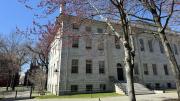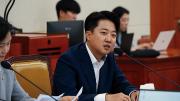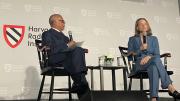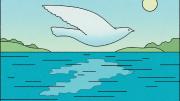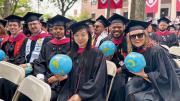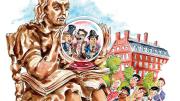A year ago, prominent social scientists gathered at Harvard to highlight what they saw as the most pressing problems in their disciplines. Asked to choose problems that were either very urgent, very difficult, or both, these 12 eminent thinkers formulated a list of nearly three dozen “hard problems in the social sciences,” then put the problems to the public for a vote (see “‘Hard Problems’ in the Social Sciences,” July-August 2010, page 60). The subsequent online forum also solicited suggestions of important problems that hadn’t made the scholars’ list, and 10 of the problems submitted by the public—including world peace, improving relations between Islam and the West, and defining humans’ purpose—were also thrown into the voting mix.
The level of public interest and attention surprised even the organizers. The project’s website attracted 7,000 visitors per month last April and May; a Facebook page drew 11,000 fans; and more than 500 people voted in the poll to decide which problems were truly the most urgent and most difficult.
As conscientious social scientists, the organizers subjected the poll results to rigorous analysis, parsing the responses in numerous ways—and the problems submitted by the public scored well. “I thought it was fascinating to see the disconnect between what the academics thought were important problems and what the non-academics thought,” says Stephen M. Kosslyn, one of the organizers. (Formerly Lindsley professor of psychology and dean of social science within the Faculty of Arts and Sciences [FAS], he now directs the Center for Advanced Study in the Behavioral Sciences at Stanford.)
Once the poll had closed, John Muresianu ’74, Ph.D. ’82, then a fellow at the Berkman Center for Internet and Society, analyzed the results using both traditional measures (such as overall high score and how many voters gave a high score for each problem) and the less-orthodox “Zec score,” an algorithm he designed based on the assertion by symposium presenter Richard Zeckhauser, Ramsey professor of political economy, that in deciding which problems social scientists should address first, extreme difficulty should actually count against a problem. (Problems whose solutions seem very unlikely “might be fun to talk about” hypothetically, Zeckhauser says, but it would be foolish to funnel resources into work on them.) Thus, even though the public ranked world peace the most important problem, and the second most difficult, it dropped to fourth place in importance when Muresianu calculated the “Zec score” because of its difficulty. Sustainable development, ranked second in importance by the public, fell all the way out of the top 10 for the same reason. (See harvardmag.com/hard-problems to see how 10 problems ranked on different scales.)
Kosslyn thinks the disconnect between scholars and the public may be partly a matter of phrasing: the public sees the forest (world peace), while scholars examine individual trees, breaking the problem down into constituent parts (e.g., the distinct roles of religion, politics, or the availability of food and water in contributing to violence). One way “to bridge the gap” and foster a better understanding of what social scientists do, says Jennifer Shephard of the FAS social science dean’s office, who helped coordinate the original event, “is to have more conversations where the public is involved and scientists explain their research in a way that’s accessible.”
The idea for the “hard problems” symposium and follow-up originally came from Nick Nash ’00. As an undergraduate chemistry and physics concentrator, he was inspired by “Hilbert’s problems”: a list of 23 hard problems in mathematics assembled by mathematician David Hilbert in 1900. Eleven decades later, 10 of those problems had been solved; four had been classified as unsolvable; and all but two of the rest had been partially solved. Nash—now a vice-president at General Atlantic, an investment firm based in Greenwich, Connecticut, began to wonder whether a similar list of problems could be assembled for the social sciences, for possible solution during the coming century.
Nash secured funding for the project through the Indira Foundation; he, Kosslyn, and Shephard coordinated the April 2010 symposium and the online poll and discussion that followed. They drew attention to the discussion through press releases and Facebook ads, targeting users in countries and regions that were underrepresented among poll respondents. The response, says Nash, was thrilling: “We’d post a problem and ask, ‘What do you think?’ We’d have a woman in India opine, followed by a man in Nigeria, and then a teenager in Brazil would respond. What a fascinating way to get the whole world humming and buzzing about ideas.”
A parallel but independent effort by the National Science Foundation may indicate that the time is indeed ripe for aligning academic efforts (and public funding for them) with public priorities. The foundation’s general call last August for “decadal-scale ideas” on directions for research in the social, behavioral, and economic sciences drew 252 white papers from scholars (the abstracts are now viewable online). The NSF sometimes finds itself “stuck in this year-by-year budget cycle,” explains assistant director Myron Gutmann. “I wanted to ask, ‘What are the big ideas we can be working on 10 years from now?’ so we really make a good investment in planning for them.” The agency will review the submissions and announce priorities in the summer.


